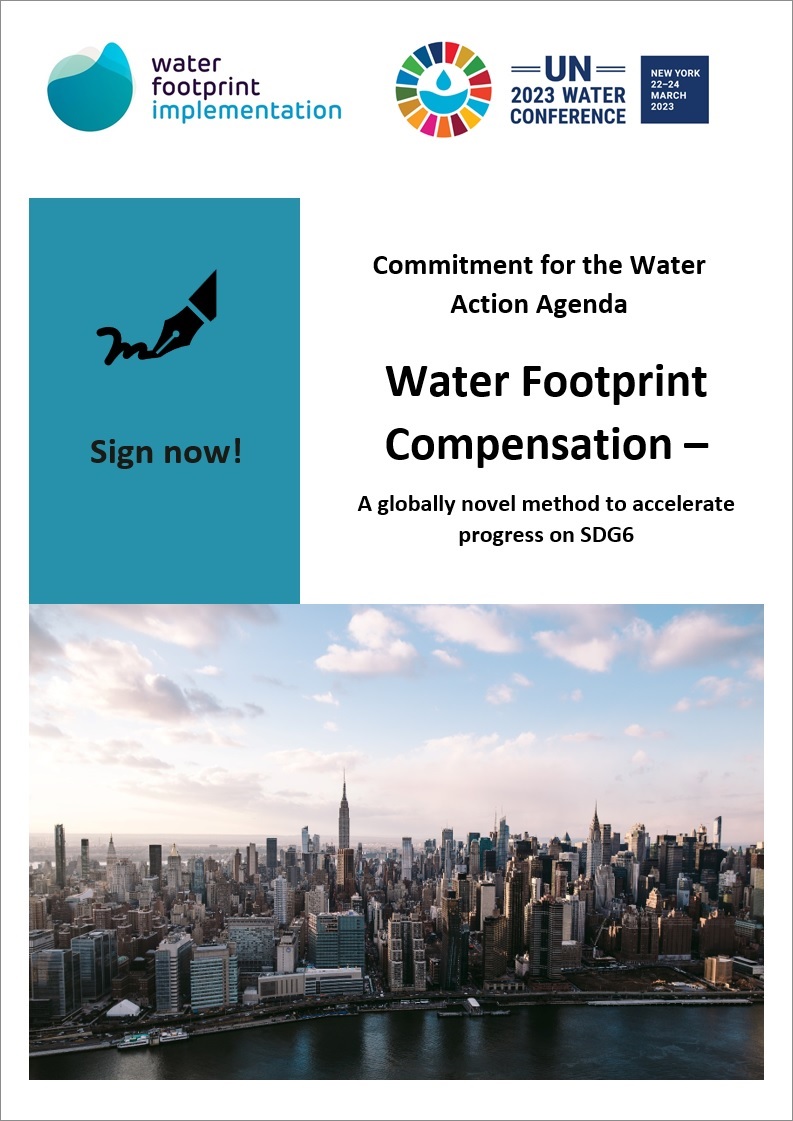Water Footprint Compensation Commitment for the Water Action Agenda

Despite efforts in recent decades, pressure on water resources worldwide is increasing in terms of pollution and overconsumption. Regulatory efforts to prevent further pressure on water resources need to be complemented by restorative actions at the local or river basin level not only by water authorities but also by private sector water users.
The manufacturing and services sectors often contribute to the pollution and depletion of freshwater resources worldwide without being aware of their impact due to lack of transparency in the supply chain. At the same time, many private sector actors are willing to invest in offsetting or compensating for their impacts. This is why Water Footprint Implementation together with private sector and academic partners are developing both a method for water footprint compensation and a digital platform for matching businesses with fitting compensation projects.
Water Footprint Compensation is a concept that implies a water user can mitigate the negative impacts of their water consumption by taking action to replenish, restore or protect the water system from which the water has been abstracted.
Water Footprint Compensation (WFC) implies that a water user can mitigate the negative impacts of their water consumption by taking action to replenish, restore or protect the water system from which the water was abstracted. Compensating for a water footprint means the water user has first measured and assessed the impacts of both their direct (operational) and indirect (supply chain) water consumption and goes beyond direct operations to redress the impact on water scarcity and pollution where the largest share of their water footprint lies, in the supply chain.
Through this innovative mechanism, businesses and other types of organizations will receive the clarity and support needed to take concrete action and invest in water projects delivering two major benefits: compensating for private sector overconsumption and pollution and accelerating the progress on SDG6.
This is why Water Footprint Implementation together with its global ecosystem of partners commit to:
- The continuous development of the Water Footprint Compensation Method, from version 0.1 launched in March 2023 to a WFC Framework version 1.0 though expert input and knowledge support
- The development of a digital platform and network of organizations where compensators can be matched with compensation projects
- Raising awareness on compensation among the largest water users from the most relevant industry sectors and identify early adopters of compensation practices
Expected Impact
What if businesses could ensure producing their goods and services does not lead to water depletion or pollution anywhere in the world? Our vision is a world in which freshwater is used in a fair and smart way. This means water use is efficient, there is no water pollution that harms ecosystems and human beings, and all users in a catchment can satisfy their need for water, be it for human consumption, industry, or agriculture.
The production of goods and services has taken an immense toll on the earth’s water resources, throwing the system out of balance. But businesses can also play a role in bringing the system back into balance. All that’s needed is the will.
Compensating for a water footprint implies supply chain transparency and sustainable sourcing. These are not simple actions to take and will require businesses to commit to long-term efforts but, if sufficient companies will do so, the results will be transformative not only for the health of freshwater resources but also for that of our society and global economic system.
